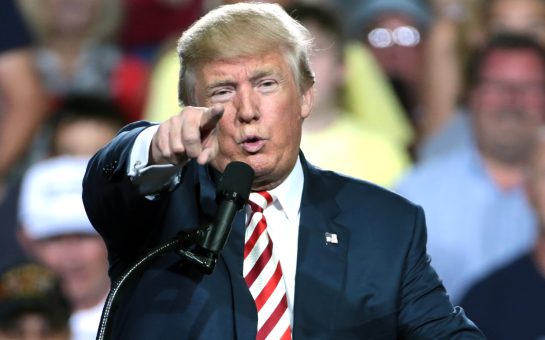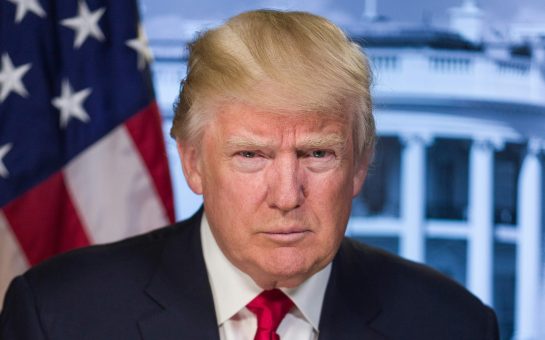With less than one hundred days to go until the US Presidential election, former Vice President and presumptive democratic nominee Joe Biden is well placed to defeat President Donald Trump.
It is important to remember that 100 days is a lifetime in a political campaign, and in today’s political environment this especially rings true.
This election is shaping up to be one unlike any we have seen before, with the COVID 19 pandemic likely to have a massive impact on voting turnout, early voting and the ability for the candidates to campaign effectively.
We have already seen the Democratic and Republican Party Conventions postponed or severely curtailed; these are usually seen as “springboards” for each candidate to formally accept their parties nomination and begin the final stretch of the campaign.
A similar situation is unfolding with presidential debate locations having to be moved as coronavirus case numbers have continued to rise in the US.
It is, therefore, possible that many of the traditional campaign pinpoints will look different in 2020 and data may become a much more useful tool to understand where the race is at, and who is likely to come out on top.
Let’s have a look at the numbers. Currently, Biden enjoys a relatively modest lead in the national popular vote over Trump.
Currently, an average of all polls according to realclearpolitics.com has Biden leading by just under nine points nationally. Some recent polls have even given Biden double-digit leads.
Overall, Biden is up around four points since March, when he became the presumptive nominee.
These poll numbers could be attributed to Trump’s mishandling of the pandemic, sending mixed messages and discrediting experts.
The killing of George Floyd and rise of the Black Lives Matter movement does not seem to have helped the Presidents polling numbers either.
It is also a factor that while Trump has been forced to continue governing during these events,
Biden does not currently hold any form of elected office.
Trump has held numerous press conferences and has been frustrated that he cannot hold large rallies which were a feature of his 2016 campaign.
Meanwhile, Biden has been limited to having virtual contact with the media and voters while on lockdown in his Pennsylvania basement.
Trump may have had more headlines, but they have not always been for the right reasons.
The former VP seems to be adopting the strategy of “getting out of the way” when his opponent is in trouble.
Casual political observers may be fooled into thinking that the election result is sewn up and Biden is headed for the White House in January, but Trump still holds an advantage in the electoral college.
The electoral college system is the way the US determine the outcome of their presidential elections.
Each state has a certain number of electoral college votes- the larger the population of the state the larger their electoral college votes.
California, for example, has 55 electoral college votes while Wyoming only has three. These are determined by the number of each states congresspeople and senators added together.
The electoral college votes are allocated on a “winner takes all” basis, so a candidate could theoretically win California by 0.01% but still be awarded all 55 electoral college votes.
Only two states, Nebraska and Maine, award their electoral college votes on a proportional basis. 270 electoral college votes of a possible 538 are required to be elected president.
Phew, I hope you have managed to get your brain around all that!
As we can see, many states are already certain to vote for one candidate or another.
The renowned American pollster Nate Silver gives Biden a 99.9% chance of winning liberal California while Trump has a 99.9% chance of winning more conservative states like Nebraska, Louisiana, Oklahoma and the Dakotas.
What is most important in a US presidential race is to look at the polling from the “toss up” states, ones which have traditionally swung between Democratic and Republican control and almost always influence the elections outcome.
These are states where the candidates are polling between 0 and 5 points from one another. These toss up states, marked in purple are mostly ones which President Trump carried in 2016 and he will need to carry again in 2020 if he is to be re-elected.
Some states like Texas, once reliably Republican, have become more competitive in recent years due to an influx in large immigrant populations.
There are 193 electoral votes up for grabs in these toss up states and they will be pivotal in the outcome of the election.
At this stage, Biden does not have to win as many of them as Trump does, but many of these states were expected to be carried by Hillary Clinton in 2016 and yet Trump won many unlikely victories in the Midwest which ultimately put him in the White House.
It is not beyond the realms of possibility that this would happen again, especially since the polling in these states is often within the margin of error.
Looking at the current average of all the swing state polling, Biden holds a lead in a number of states which Trump carried in 2016.
If the election were held today then Florida, Michigan, Pennsylvania and North Carolina would all fall squarely into the former Vice Presidents column.
Although, these numbers do not have to move very far to be within the margin of error.
If Biden loses 4-5 points nationally then a number of these states would become truly too close to call and even though he still would win the national popular vote by 2-3 points it is possible he could lose the electoral college.
If these numbers remain steady, and the candidate who is currently ahead in each state would go on to win, then Biden would most likely become the 46th President of the United States.
As we enter the final 100 days until the election, the Trump campaign will want to focus its efforts into these swing states while the Biden campaign would be wise to not try and overextend their campaign.
If the former Vice President wants to be successful in this election then he would be wise to ensure he shores up his polling numbers in Florida and the Midwest which should give him more than enough electoral college votes to win the presidency.
It could be a misstep if he was to campaign and spend lots of money in more traditionally Republican-leaning states like Texas, Arizona and Missouri in an attempt to win in a landslide.
It is important not to overshoot your target



